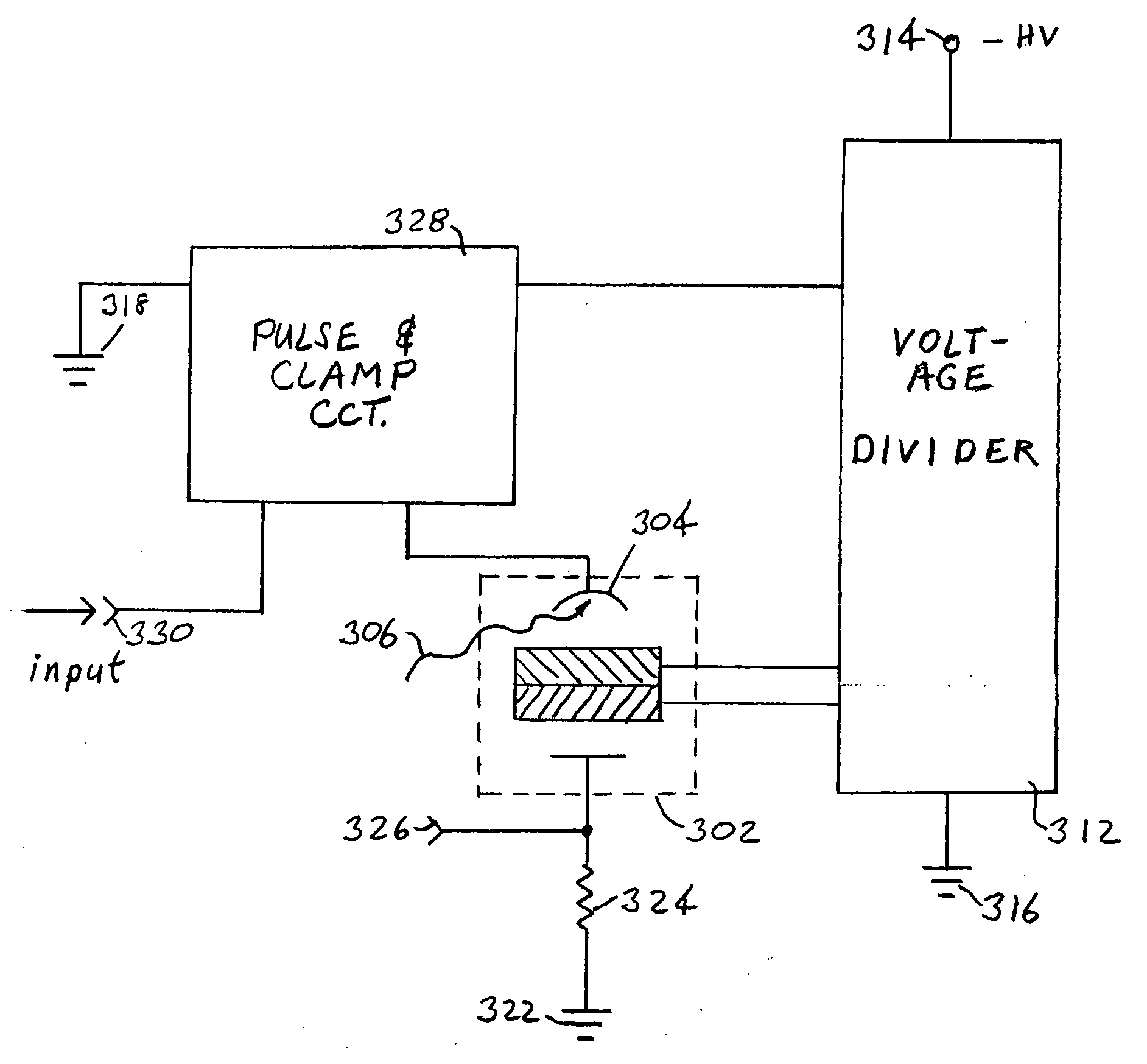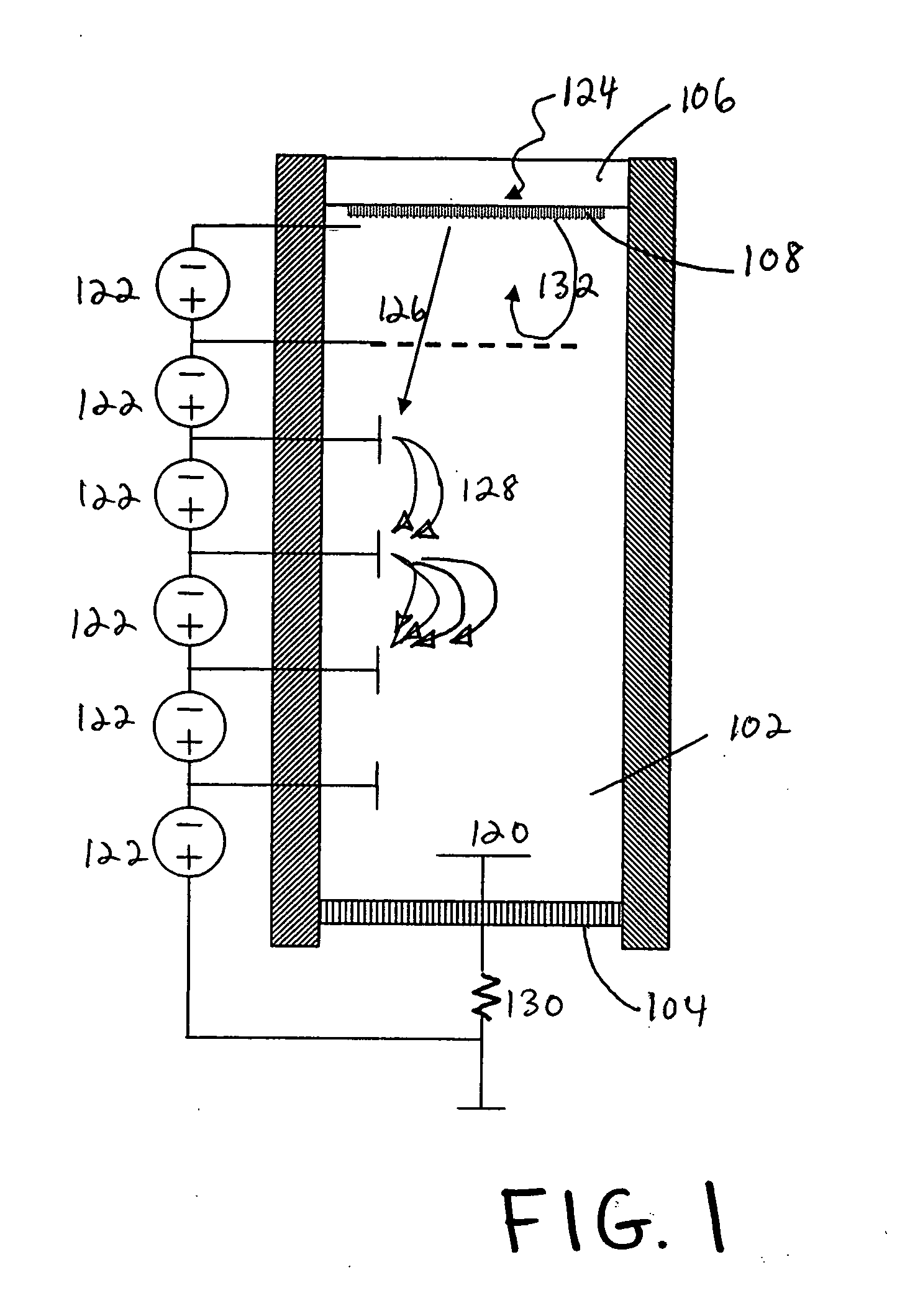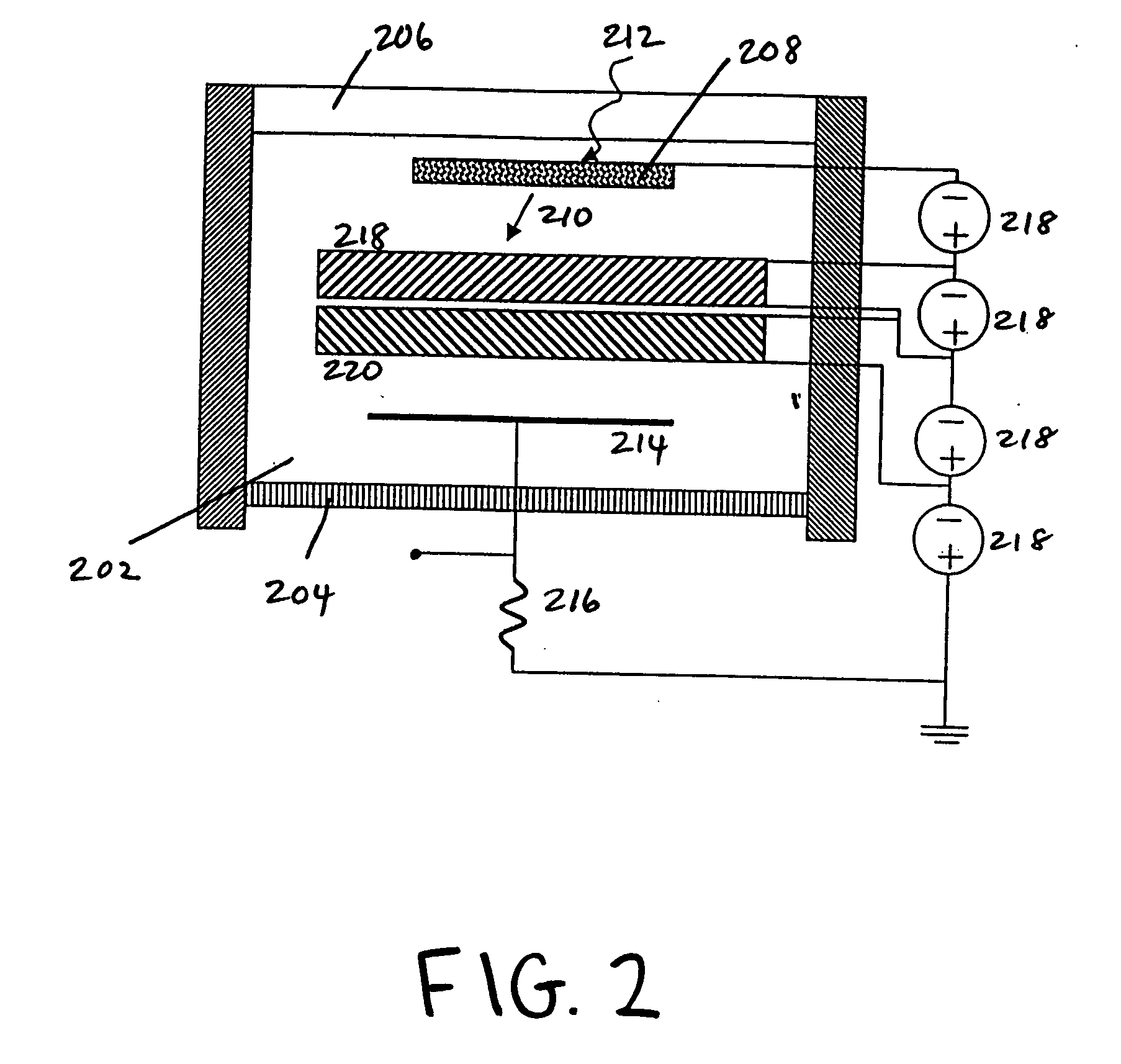Bleeder powered gating amplifier
a gating amplifier and bleeder technology, applied in the field of electromechanical circuitry, can solve the problems of subsequent detection, large scattering and back reflection from the atmosphere, and limited operating range of the photomultiplier tube,
- Summary
- Abstract
- Description
- Claims
- Application Information
AI Technical Summary
Benefits of technology
Problems solved by technology
Method used
Image
Examples
Embodiment Construction
[0034] A photomultiplier tube is biased by a voltage divider network sourced by a negative high-voltage power supply. For a photomultiplier tube with several dynodes and a possibly an additional focusing electrode, as for example shown in FIG. 1, the several electrodes are appropriately biased by various voltage levels produced by the voltage divider network. This type of photomultiplier tube can be gated by applying a reverse-bias voltage pulse to the photocathode, the focusing electrode or one of the dynodes near the photocathode.
[0035] In the case of a microchannel plate type photomultiplier tube, as for example shown in FIG. 2, the voltage divider network provides appropriate voltage bias levels for the microchannel plates and photocathode. The photomultiplier tube can be gated by applying a voltage pulse to the photocathode, or to one of the microchannel plates.
[0036] The invention will be described in specifics and detail for this type of microchannel photomultiplier tube, b...
PUM
 Login to View More
Login to View More Abstract
Description
Claims
Application Information
 Login to View More
Login to View More - R&D
- Intellectual Property
- Life Sciences
- Materials
- Tech Scout
- Unparalleled Data Quality
- Higher Quality Content
- 60% Fewer Hallucinations
Browse by: Latest US Patents, China's latest patents, Technical Efficacy Thesaurus, Application Domain, Technology Topic, Popular Technical Reports.
© 2025 PatSnap. All rights reserved.Legal|Privacy policy|Modern Slavery Act Transparency Statement|Sitemap|About US| Contact US: help@patsnap.com



